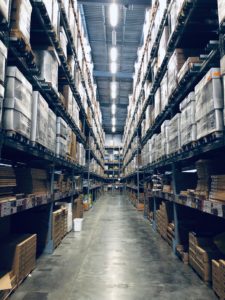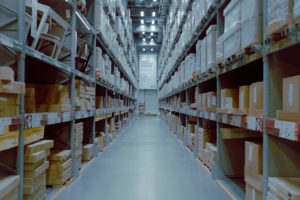Why is it important?
Procurement of goods and services can make a real difference in reducing carbon emissions. Emissions are associated with raw materials, production, processing/manufacturing, packaging, storage, transport as well as the emissions related to purchased services (maintenance, IT, etc.). For organisations in the aid sector, procurement accounts for 40 – 60 % of their carbon footprint (1).
According to the Carbon Disclosure Project (CDP) (2), more than half of the 11,457 suppliers that responded to their questionnaire did not have any climate targets in 2021. With only 38% of the reporting companies engaging with suppliers on climate change, and only 55% on deforestation, the need to scale supply chain action is clear.
What is the solution?
Both large and small organisations can enter into a dialogue on climate action with their suppliers.
Communicate the organisation’s climate strategy with the suppliers, bringing the topic up in meetings. Request suppliers to measure their emissions and to set an ambitious carbon reduction target, in line with science. Explore innovative procurement solutions and alternative products. Propose incentives for suppliers to decarbonise their business and products.
Organisations that have their decarbonisation plan validated by the Science-Based Targets Initiative have to include suppliers in their climate strategy: if the indirect emissions from their value chain (i.e. scope 3 emissions, including purchased goods and services, business travel, waste disposal, etc.) are higher than 40%, they have to address at least 67% of them – for example by asking their suppliers to also set a Science-Based Target, thereby creating a snowball effect (3).
Download this solution area

Key solutions
-
#1 Communicate your strategy
Communicate your climate strategy and expectations for supply chain emission reduction to suppliers. Consider providing suppliers with access to resources and training material. Discover more
-
#2 Request carbon reduction from suppliers
Require that suppliers measure their direct and indirect carbon emissions and set a climate target in order to reach the 1.5° objective.
-
#3 Enter into a dialogue
Proactively engage with suppliers to explore innovative solutions and alternative products with a lower carbon and-environmental impact.
-
#4 Incentivise suppliers
Incentivise suppliers to decarbonise their business and products through public recognition, beneficial payment terms, long-term contracts, or higher product prices.
-
#5 Set up joint improvement projects>
Engage in specific projects with suppliers to reduce the carbon impact of their products.
To consider
-
Focus effort on high impact suppliers
Focus on high impact suppliers. If emission data is not available, use expenditures as a proxy. Consider suppliers of all highly emissive products. Include factors like the maturity of suppliers on climate, the presence of a strategic partnership, and the potential to reduce emissions (e.g. based on the relationship with the supplier or on the geography. (6)
-
Involve procurement teams
Involve the procurement team in the development and execution of the supplier engagement strategy as early as possible. Buyers know the markets they operate in well and are in regular contact with their suppliers. Dedicated training for staff on climate change and the impact of procurement on the carbon footprint is key.
-
Adapt your strategy
Engaging with local manufacturers requires a different strategy than when dealing with large international suppliers.
-
Join forces with other partners towards suppliers
Joining forces with others, through organisations such as The Climate Action Accelerator or the Science-based Target Initiative, can give weight to demands on low-carbon products and production processes, thereby supporting the necessary market shift.
Quote

Cascading action through the value chain is necessary to eventually meet ambitious targets and must be amplified by continued supplier engagement
Carbon Disclosure Project, Engaging the Chain, 2022 (7)
Tools and good practices
-
Exponential Roadmap 1.5°C Supplier Engagement Guide
An online tool that provides key actions for different steps of the procurement process. It provides templates, supplier letters and other examples of concrete actions of organisations.
Check here -
Exponential Roadmap Initiative, Supplier Action Guide, 2023
A practical framework that provides guidance on how to set and follow-up on ambitious climate targets for suppliers.
Check here -
Transform to Net Zero, Buyer-Supplier Engagement to Reduce Upstream Scope 3 Emissions, 2021
In this Transformation Guide, three Transform to Net Zero members, Unilever, Nike, and Microsoft, share their approach of engaging suppliers to bring them along on the decarbonisation journey.
Read here -
National Health Service (NHS): Net zero supplier roadmap, 2021
The roadmap for suppliers to align with the NHS net zero requirements.
Check here -
WREC, Green Procurement Market Assessment Tool, 2024
For field procurement staff, the tool provides logisticians and procurement officers with a set of questions to assess how suppliers integrate sustainability in their operations and products.
Check here
Resources for suppliers
-
Exponential Roadmap, 1.5° Business Playbook
A playbook with key steps for any business that is committing to reducing emissions in line with science.
Read here -
Science-Based Targets Initiative, Resources and training
Resources on setting climate targets, including e-learning modules.
Read here -
SME Climate Hub
A non-profit initiative that enables small to medium sized companies to take climate action and build resilient businesses for the future.
Check here -
Axfoundation, Climate Tool
A free online course to help organisations get started on reducing carbon emissions. It focuses on the strategic process and provides a good overview on measuring emissions using the Greenhouse Gas Protocol.
Read here -
SME Climate Hub, Climate Fit Course
A set of complementary online trainings specifically tailored to help SMEs determine how to take climate action and future proof their businesses. It focuses on the presentation of concrete solutions.
Read here
Supplier incentives

Supplier communication

Request carbon reductions at supplier level

Packaging

Procurement criteria

Food items

Non-food items

Sources
(1) Based on data from Climate Action Accelerator partners.
(2) Carbon Disclosure Project, 2022, Engaging the Chain: Driving Speed and Scale. CDP Global Supply Chain Report 2021, p. 18. Read here.
(3) Science Based Targets Initiative, How-To-Guide for Setting Near-term Targets, 2021. Read here.
(4) Carbon Disclosure Project, 2022, Engaging the Chain: Driving Speed and Scale. CDP Global Supply Chain Report 2021. Read here.
(5) Based on carbon footprints of Climate Action Accelerator partners.
(6) Based on Exponential Roadmap, 2023, Supplier Action Guide. Explore it here.
(7) Carbon Disclosure Project, 2022, Engaging the Chain: Driving Speed and Scale. CDP Global Supply Chain Report 2021, p. 18. Read here.
Not included online :
Science-Based Targets Initiative (SBTi), Corporate Manual
A detailed step-by-step guide to the process of setting a science-based target through the SBTi.
https://sciencebasedtargets.org/resources/?tab=develop#resource
Science-Based Targets Initiative (SBTi), SME Target Setting
An article on the simplified process for setting SBTs for SMEs.
Cover photo: Marcin Jozwiak/Unsplash
Supplier communication

Supplier incentives

Request carbon reductions at supplier level

